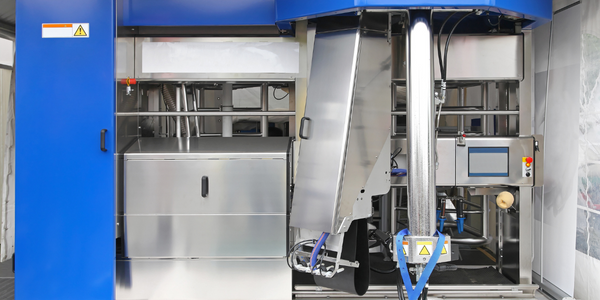Customer Company Size
Large Corporate
Region
- America
Country
- United States
Product
- Denodo Platform
- AutoCAD
- Autodesk Software
Tech Stack
- Data Virtualization
- ETL
- Kafka
Implementation Scale
- Enterprise-wide Deployment
Impact Metrics
- Revenue Growth
- Productivity Improvements
- Digital Expertise
Technology Category
- Platform as a Service (PaaS) - Data Management Platforms
- Analytics & Modeling - Data-as-a-Service
Applicable Functions
- Business Operation
Use Cases
- Process Control & Optimization
- Predictive Quality Analytics
Services
- Data Science Services
- System Integration
About The Customer
Autodesk is a leader in 3D design, engineering, and entertainment software. Since its introduction of AutoCAD software in 1982, Autodesk continues to develop the broadest portfolio of 3D software for global markets. Customers across manufacturing, architecture, building, construction, and media and entertainment industries, use Autodesk software to design, visualize, and simulate their ideas before they are built or created. Considering the changing patterns in software consumption, the company decided to transform its revenue model from a conventional perpetual licensing to a more modern subscription-based licensing model to increase profits and propel growth.
The Challenge
Autodesk, a leader in 3D design, engineering, and entertainment software, decided to transform its revenue model from a conventional perpetual licensing to a more modern subscription-based licensing model to increase profits and propel growth. However, Autodesk's existing Business Intelligence (BI) system could not support this critical change to the revenue model. The transition impacted the finance department's ability to track subscriptions, renewals, and payments, and the BI system, which included an operational data warehouse, could not meet the demands of the business stakeholders, who increasingly required both high quality and timely data. Autodesk quickly decided that an evolution to an agile BI 2.0 architecture was necessary with a logical data warehouse at its core.
The Solution
Autodesk implemented a logical data warehouse using the Denodo Platform for data virtualization to address the change in their revenue model. At Autodesk, data originated from multiple and disparate data sources that included OLTP, flat files, geospatial data, streaming data from social media, and web logs. The traditional integration systems included ETL for batch processing of data from relational databases and Kafka (CSE) for integrating streaming data. Also, Autodesk had an enterprise data lake, which housed data from several big data sources such as Spark and Scala, while the OLTP and Geospatial data was ETL-d and stored in an operational data warehouse. The Denodo Platform for data virtualization was first introduced to Autodesk's Finance department, who used it to track subscriptions, renewals, and payments. Data virtualization helped to abstract the financial data from their business users without them having to touch or transform any of the physical data.
Operational Impact

Case Study missing?
Start adding your own!
Register with your work email and create a new case study profile for your business.
Related Case Studies.

Case Study
System 800xA at Indian Cement Plants
Chettinad Cement recognized that further efficiencies could be achieved in its cement manufacturing process. It looked to investing in comprehensive operational and control technologies to manage and derive productivity and energy efficiency gains from the assets on Line 2, their second plant in India.

Case Study
Airbus Soars with Wearable Technology
Building an Airbus aircraft involves complex manufacturing processes consisting of thousands of moving parts. Speed and accuracy are critical to business and competitive advantage. Improvements in both would have high impact on Airbus’ bottom line. Airbus wanted to help operators reduce the complexity of assembling cabin seats and decrease the time required to complete this task.

Case Study
Improving Production Line Efficiency with Ethernet Micro RTU Controller
Moxa was asked to provide a connectivity solution for one of the world's leading cosmetics companies. This multinational corporation, with retail presence in 130 countries, 23 global braches, and over 66,000 employees, sought to improve the efficiency of their production process by migrating from manual monitoring to an automatic productivity monitoring system. The production line was being monitored by ABB Real-TPI, a factory information system that offers data collection and analysis to improve plant efficiency. Due to software limitations, the customer needed an OPC server and a corresponding I/O solution to collect data from additional sensor devices for the Real-TPI system. The goal is to enable the factory information system to more thoroughly collect data from every corner of the production line. This will improve its ability to measure Overall Equipment Effectiveness (OEE) and translate into increased production efficiencies. System Requirements • Instant status updates while still consuming minimal bandwidth to relieve strain on limited factory networks • Interoperable with ABB Real-TPI • Small form factor appropriate for deployment where space is scarce • Remote software management and configuration to simplify operations

Case Study
Developing Smart Tools for the Airbus Factory
Manufacturing and assembly of aircraft, which involves tens of thousands of steps that must be followed by the operators, and a single mistake in the process could cost hundreds of thousands of dollars to fix, makes the room for error very small.









